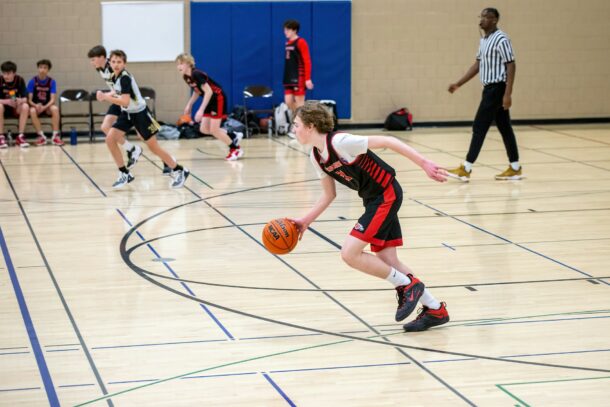Rising costs in youth athletics are forcing tough decisions on families. Whether it’s tournament fees, travel expenses, or just the price of a new pair of shoes, many parents feel the squeeze. If we want affordable youth sports to be more than just a nice idea, we need to be intentional about how we run our teams, clubs, and programs. This includes coaches and parents working together to find common-sense ways to keep kids in the game and not on the sidelines due to cost.
As a coach who’s been around the game for years, I’ve seen firsthand how quickly costs can push families out. Youth basketball is supposed to be fun, developmental, and accessible. But today, the experience often comes with a price tag that rivals a weekend vacation. Families are spending hundreds, sometimes thousands, just to let their kids compete. It shouldn’t be that way.
The good news? There are ways to shift course. With some creative thinking, collaboration, and a bit of planning, we can bring affordable youth sports back into reach for more families. And it starts with understanding where the money is going and what we can do about it. We talk about five ways to do it below.
The Hidden Price of “Just Playing”
Most people don’t realize how quickly costs add up. Even before the first whistle, families might already be out $1,000 per player. That’s just to join a team. Add in uniforms, shoes, gym space, and tournament entry fees, and suddenly affordable youth sports don’t feel so affordable.
Even attending games can get pricey. At some weekend basketball tournaments, parents might pay $15–25 per person just to watch their own kids. Multiply that by two days and multiple family members, and a single weekend outing can run over $100, just to spectate.
Here’s a look at five ways that can help make affordable youth sports a reality.
1. Affordable Youth Sports Start With Smarter Scheduling
One way coaches and clubs can ease the financial burden is by being smart with scheduling. Local tournaments and in-town games help limit travel costs. Parents don’t have to book hotel rooms or miss work. You don’t need five out-of-state trips to help kids grow as players. Keep the focus on development and competitive reps, not mileage.
Try to group games geographically when planning a season. A smart weekend schedule can reduce the need for multiple long drives. If you’re playing two or three games, keep them close together in time and location. That way families can manage their time and their wallets more efficiently.
When possible, partner with other nearby programs to rotate hosting duties. Shared scheduling builds relationships and supports affordable youth sports across a whole region.
2. Rethink Tournament and Facility Fees
Gym rentals are getting more expensive, and that cost gets passed down. Still, some programs charge far beyond what’s necessary. Clubs should operate with transparency and show families where their money is going.
When possible, host small tournaments or clinics in partnership with local schools or rec centers. That cuts down on facility costs and creates more affordable youth sports opportunities.
Tournament operators can help, too. Offering discounted passes for parents or family bundles makes a big difference. If entry is $30 for two days, a family of three is spending nearly $100 just to watch. That doesn’t include food, gas, or lodging. Creating flexibility at the gate encourages participation rather than pricing people out.
Join the TeachHoops Community

TeachHoops.com offers a unique platform for coaches to share experiences and gain new insights. Learn from others who have navigated similar challenges. It’s an invaluable resource for those looking to:
- Broaden perspectives
- Refine strategies
- Enhance their leadership and motivational skills
Step into Enhanced Coaching
Win the Season: Basketball Masterclass!

3. Affordable Youth Sports Need Community Buy-In
Making youth sports accessible isn’t just about saving money. It’s about building community support. Sponsors can help offset costs, especially local businesses. Some might be willing to cover uniforms or pay tournament entry fees in exchange for a small banner or shoutout.
Coaches can also create scholarship or sliding scale systems within their own programs. Not every kid’s family can pay full price. And if we’re serious about keeping affordable youth sports a priority, we can’t ignore that reality.
4. Encourage Recreation Alongside Competition
There’s nothing wrong with travel ball. It can be a great experience for many kids. But recreational leagues still matter. In fact, they might matter more.
Not every player needs five games every weekend. They need to learn the game, build confidence, and love competing.
Keeping rec leagues vibrant helps reduce burnout and keeps the sport accessible. Plus, they often operate with much lower fees. Coaches who give back by working with or supporting their local rec leagues help preserve affordable youth sports in their communities.
5. Parents and Coaches Can Partner for Better Solutions
Families can reduce costs by organizing carpools, sharing gear, and planning ahead for weekend events. Coaches can support by minimizing last-minute travel changes and keeping communication clear. A little planning goes a long way when you’re trying to manage costs across a whole season.
Both groups need to work together. If the mission is truly about helping kids grow through sports, then creating affordable youth sports models isn’t just an option, it’s essential!
Latest Posts
- How AI Coaching Prompts Can Transform Your Youth Basketball Program
- AI-Backed Basketball Coaching Strategies: Why Coaches and Players Should Adopt ‘The Coaching Habit’
- AI Tools for Basketball Coaches: Saving Time and Improving Your Program
- Complete Offseason Basketball Workout for Youth Players
- The Best Youth Basketball Passing Drills Every Coach Should Know





